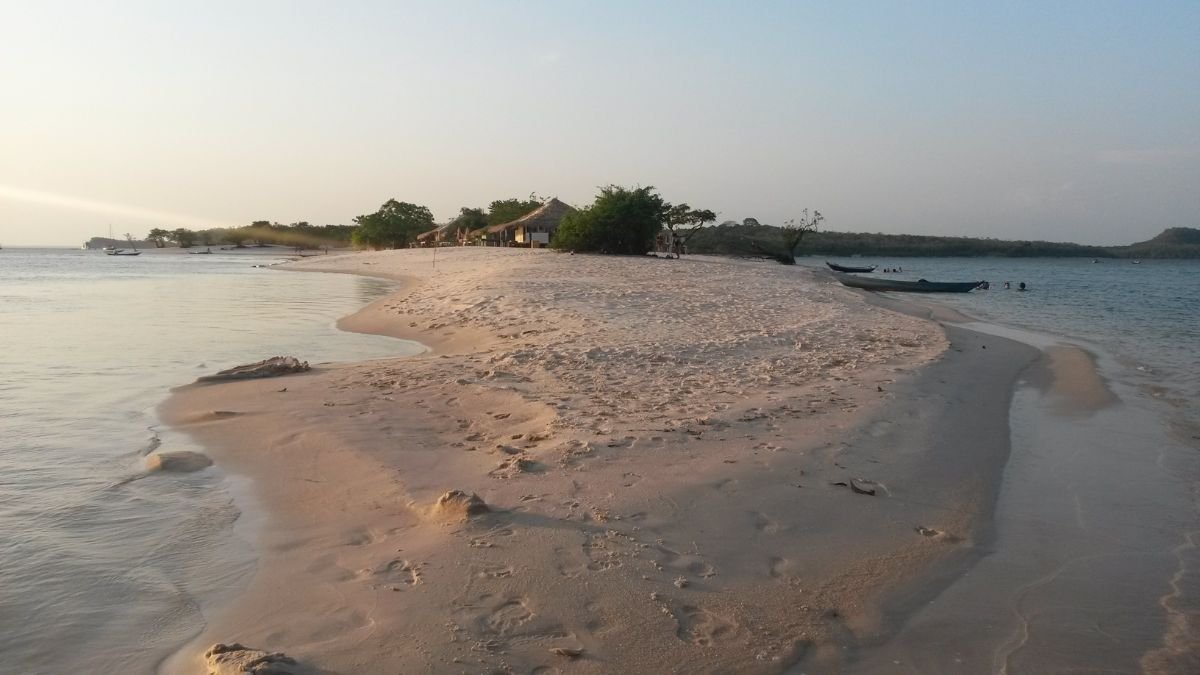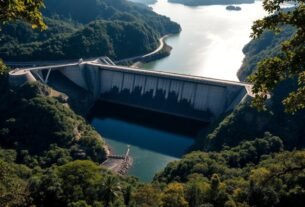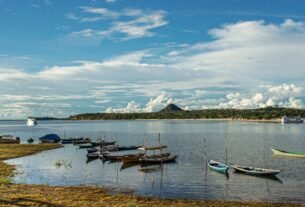Introduction
Have you ever wondered where two mighty rivers collide, creating a breathtaking natural spectacle? Nestled in the heart of the Amazon, this city, Santarém, offers a mesmerizing blend of culture, history, and untouched wilderness.
With its vibrant ecosystems and rich biodiversity, it serves as a gateway to explore the lush rainforests teeming with exotic wildlife and plant species. The interplay of the rivers not only creates stunning vistas but also plays a crucial role in the local culture, shaping the livelihoods and traditions of the communities that thrive along their banks.
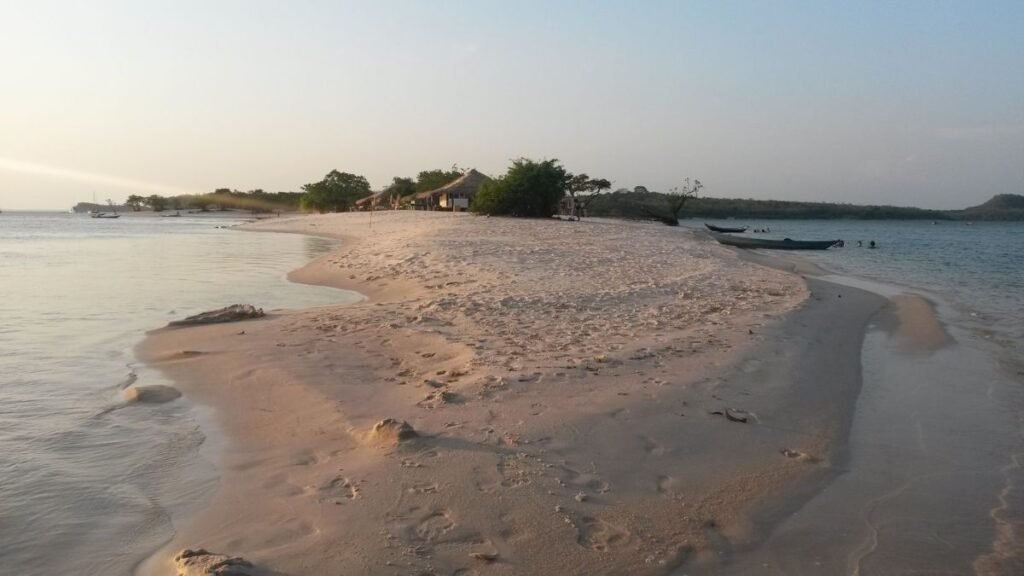
Founded in 1661, it’s the third-largest urban area in Pará, with over 330,000 residents. The confluence of the Tapajós and Amazon rivers here is legendary, where their waters flow side by side without mixing for miles, creating a breathtaking visual phenomenon that attracts both locals and tourists alike.
This unique natural occurrence is not only a sight to behold, but it also plays a vital role in the local ecosystem and the cultural practices of the communities that inhabit the area. The convergence of these two mighty rivers has shaped the region’s identity and continues to influence the livelihoods of its residents.
From dense rainforests to golden-sand beaches, this destination promises adventure at every turn. Whether you’re kayaking through winding waterways or exploring colonial-era landmarks, there’s something extraordinary waiting. Visitors can engage in various activities such as birdwatching in the lush canopies, taking guided tours to learn about the rich biodiversity, or simply relaxing on the tranquil shores. The blend of urban life and pristine nature offers a unique experience that captivates the heart and soul of every traveler.
Key Takeaways
- Gateway to the Amazon with a stunning river confluence
- Rich history dating back to Portuguese colonization
- Vibrant metropolitan hub in western Pará
- Expansive municipal area with diverse ecosystems
- Perfect blend of urban life and natural wonders
Discover Santarém: Where Rivers and Rainforests Collide
Few places on Earth showcase nature’s contrasts as vividly as this Amazonian crossroads. Here, the river systems create a spectacle unlike any other, drawing adventurers to their shimmering embrace.
The interplay of the rivers not only offers breathtaking views but also supports a rich ecosystem teeming with life, where the lush greenery of the rainforest meets the flowing waters in a harmonious blend of colors and sounds, captivating all who visit.
The Unique Geography of Santarém
The Tapajós River meets the Amazon in a stunning display called the “Meeting of Waters.” Their currents—one milky, the other sapphire—flow side by side for miles without blending. This phenomenon occurs due to differences in temperature, speed, and density, creating a mesmerizing visual effect that is both intriguing and beautiful. It is a natural wonder that has become a symbol of the region, attracting visitors who wish to witness this extraordinary sight firsthand.
Beyond the rivers, the region boasts over 62 miles of freshwater beaches. The crystalline water of the Tapajós creates stretches of sand rivaling coastal destinations, inviting sunbathers and swimmers alike to enjoy its warm, inviting waters. Alter do Chão, a nearby village, earned The Guardian’s title of “Brazil’s best beach” in 2009, thanks to its pristine beauty and the idyllic atmosphere that surrounds it. Visitors can indulge in a variety of water sports, explore the vibrant local culture, or simply unwind while taking in the stunning sunset views that paint the sky in vibrant hues.
| Climate Feature | Detail |
|---|---|
| Annual Rainfall | 2,150mm (85 in) |
| Wet Season | Dec–May (90% of rainfall) |
| Dry Season | Jun–Nov (sunny, 25–28°C avg) |
| Microclimates | Mangroves, igarapés (narrow river arms) |
Why Santarém is a Hidden Gem
This city covers an area 170 times larger than Paris, yet remains off most travelers’ radars. Unlike bustling Manaus or Belém, it offers untouched forest trails and secluded riverbanks that are perfect for exploration and reflection. The diverse landscapes, ranging from lush rainforests to serene waterways, provide a unique backdrop for both adventure seekers and those looking to escape the hustle and bustle of urban life.
The BR-163 highway links the region to southern Brazil, though seasonal rains can limit access, making it a true hidden gem. This isolation not only preserves its ecosystems but also allows for a rich biodiversity that includes jaguars, pink dolphins, and rare bird species, which thrive in the undisturbed environment. The region’s remoteness enhances its allure, offering visitors a chance to connect deeply with nature in a way that is increasingly rare in today’s world.
For those seeking adventure without crowds, this gateway to the Amazon delivers, offering both scale and serenity, and providing a tranquil retreat that feels worlds away from the more commercialized tourist destinations.
4 Must-Experience Adventures in Santarém’s Natural Wonders
For travelers seeking immersive nature experiences, this Amazonian destination offers unforgettable moments that linger long after the journey ends. From shimmering waterways that reflect the vibrant hues of the sky to lush forest trails teeming with wildlife, every adventure reveals a new facet of the region’s beauty, inviting exploration and discovery at every turn.
Whether it’s kayaking through serene lagoons or trekking along scenic paths that weave through the verdant canopy, visitors are treated to a sensory feast that highlights the incredible diversity of flora and fauna found here.
1. Witness the “Meeting of the Waters” on a Boat Tour
Hop aboard a boat from Santarém’s CDP-administered docks to see nature’s masterpiece. The Tapajós and Amazon rivers collide in a striking display, dark and light water flowing side by side for miles, creating a breathtaking visual contrast that is unlike anything else in the world.
This phenomenon occurs due to the differences in temperature, speed, and sediment between the two rivers, making it a must-see for any visitor. As you glide along the waters, keep your camera ready to capture the stunning scenery and the diverse wildlife that thrives in this unique ecosystem.
- Best operators include Amazon Star Tours and Rio Tapajós Expeditions, both of which offer knowledgeable guides who share valuable insights about the local environment and culture.
- Sunset cruises with panoramic views provide a magical experience as the sun dips below the horizon, painting the sky in vibrant colors.
- 12-hour trips to remote riverside villages enable travelers to immerse themselves in the local way of life, exploring quaint communities and savoring traditional dishes that showcase the region’s rich culinary heritage.
2. Relax on Alter do Chão’s Pristine Beaches
Dubbed the “Caribbean of the Amazon,” this paradise boasts 3 miles of powdery sand that stretches invitingly along the banks of the river. The Tapajós’ crystal-clear water invites swimming and snorkeling amid tropical fish, where vibrant colors and lively aquatic life create a stunning underwater spectacle.
The gentle waves and warm sun make it an ideal spot for sunbathing. At the same time, beachgoers can also enjoy leisurely strolls along the shore, collecting unique shells and taking in the breathtaking views of the surrounding landscape.
Visit between August and November when beaches emerge like golden islands, revealing expansive stretches of sand that are perfect for picnics and relaxation. Don’t miss the weekly artisan market, where local artisans showcase their talents, offering a diverse range of handmade crafts, from intricate jewelry to vibrant textiles that reflect the region’s rich cultural heritage.
3. Explore the Tapajós River by Canoe or Kayak
Paddle through serene tributaries like the Arapiuns River for secluded adventures that allow you to connect with nature intimately. Local guides lead mangrove kayaking trips where you might spot pink dolphins gracefully swimming alongside your canoe, creating unforgettable moments in this tranquil setting. The lush greenery and diverse birdlife along the banks enhance the beauty of your journey, making each paddle stroke a new discovery.
Thrill-seekers can try piranha fishing—just keep fingers clear! The excitement of catching these notorious fish adds an adrenaline rush to your day on the water. SAMU rescue teams patrol popular areas for safety, ensuring that adventurers can enjoy their experiences with peace of mind, knowing that help is readily available if needed.
4. Hike Through the Amazon Rainforest’s Biodiversity
UFOPA University maintains research trails perfect for eco-tourists, offering a unique opportunity to immerse oneself in the stunning biodiversity of the Amazon. These well-marked trails wind through the lush vegetation, allowing hikers to witness firsthand the vibrant ecosystem that thrives in this remarkable region.
During the dry season (August–October), the conditions are particularly favorable for spotting a variety of wildlife, including playful monkeys swinging through the treetops, colorful toucans with their distinctive beaks, and rare orchids that bloom in a dazzling array of colors.
For a deeper exploration, follow this 14-day Amazon itinerary, which covers hidden gems beyond Santarém. This itinerary not only highlights the must-see locations but also provides insights into the local culture and the importance of conservation efforts in the area, ensuring that visitors gain a comprehensive understanding of the Amazon’s rich heritage and the challenges it faces.
3 More Thrilling Activities for the Adventurous Traveler
Beyond the iconic river tours and jungle hikes, this vibrant city offers heart-pounding adventures for thrill-seekers. From cascading waterfalls to cultural spectacles, these experiences will elevate your Amazon journey.
Thrill-seekers can indulge in exhilarating activities such as zip-lining through the dense canopy, where the rush of wind and breathtaking views create an unforgettable experience. Additionally, guided night tours through the rainforest reveal the mysterious nocturnal wildlife, adding an element of excitement and intrigue.
These adventures not only provide adrenaline-pumping fun but also foster a deeper connection with the rich biodiversity of the Amazon.
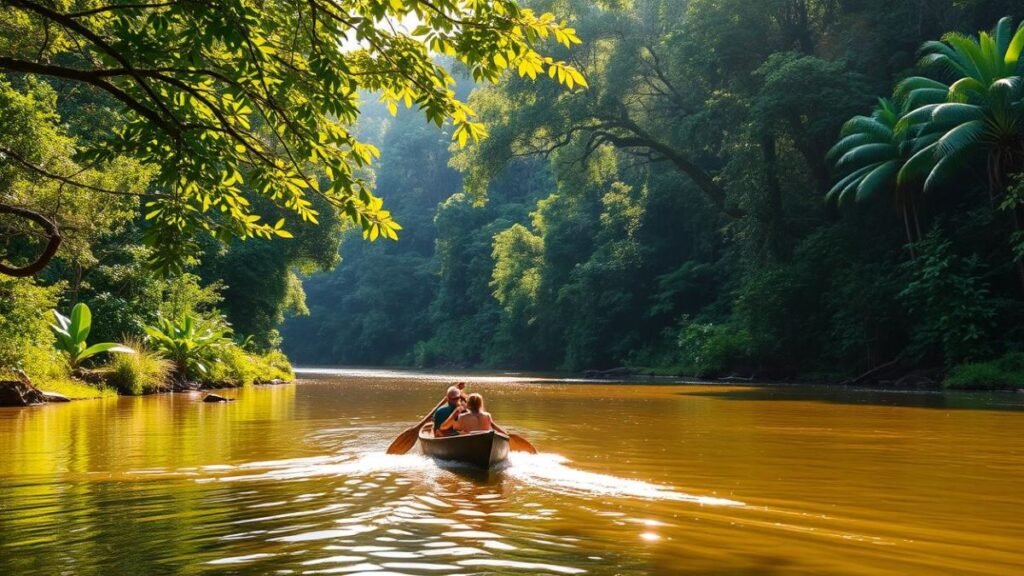
5. Rappel Down Waterfalls Near Santarém
Maracanã Falls, located just 45 minutes from the city center of Macapá, offers 65-foot vertical drops that are perfect for rappelling. The stunning natural beauty surrounding the falls, with lush greenery and the sound of cascading water, creates an exhilarating atmosphere. Amazon Vertical Adventures offers guided descents with safety gear and photography packages, ensuring that every moment is captured to create memories that last a lifetime.
The experienced guides not only assist with the technical aspects of rappelling but also share insights about the local flora and fauna, enriching the experience.
Combine with cave exploration in nearby Gruta do Maroaga, where ancient rock formations and unique ecosystems await
- Best visited July–December when water levels are safe, allowing for optimal conditions and breathtaking views
- Night rappelling tours are available with bioluminescent views, offering a magical experience as you descend under the stars
6. Fish for Piranhas in the Tapajós Tributaries
The Arapiuns River tributaries teem with three aggressive species:
| Species | Distinct Feature | Active Hours |
|---|---|---|
| Red-bellied | Most aggressive, known for their ferocity and striking appearance | Dawn/Dusk |
| Black | Largest teeth, making them formidable opponents for anglers | Midday |
| São Francisco | Rare golden scales, a stunning sight that adds to their allure | Afternoon |
Local guides teach proper techniques using bamboo rods, ensuring that both novice and experienced anglers can enjoy the thrill of reeling in a catch. “Always keep your catch horizontal—their teeth can snap fingers vertically,” warns veteran fisherman João Silva, emphasizing the importance of safety and respect for these powerful fish. The experience not only provides excitement but also a deeper appreciation for the Amazon’s unique aquatic ecosystem.
7. Attend the Sairé Festival (If Visiting in September)
This 300-year-old celebration blends Catholic and indigenous traditions in a three-day spectacle:
- Day 1: Folklore parade with elaborate Boi-Bumbá costumes
- Day 2: River procession honoring Our Lady of Nazareth
- Day 3: Competitive canoe races drawing 10,000+ spectators
The festival’s popularity surged during the 1980s gold rush, when the region’s population grew by 23% in a single year.
“Sairé is where our ancestors’ spirits dance with modern faith—it’s the soul of our area.”
Maria Fernandes, Cultural Director
Cultural and Historical Gems of Santarém
Step into a world where ancient traditions and colonial charm weave together in this Amazonian hub. The city’s identity is shaped by the legacy of the Tapajós people and Portuguese influences, which are visible in its architecture and artifacts.
The Tapajós, renowned for their rich cultural practices, were skilled artisans who crafted beautiful pottery and intricate carvings that reflected their deep connection to the land and its resources. This artistic heritage is not only a testament to their craftsmanship but also serves as a window into their spiritual beliefs and daily life.
The Portuguese colonization introduced new architectural styles and religious practices, blending with indigenous traditions to create a unique cultural tapestry that defines Santarém today. Visitors can explore historical sites that showcase this fusion, providing insight into how these diverse influences have shaped the community over the centuries.
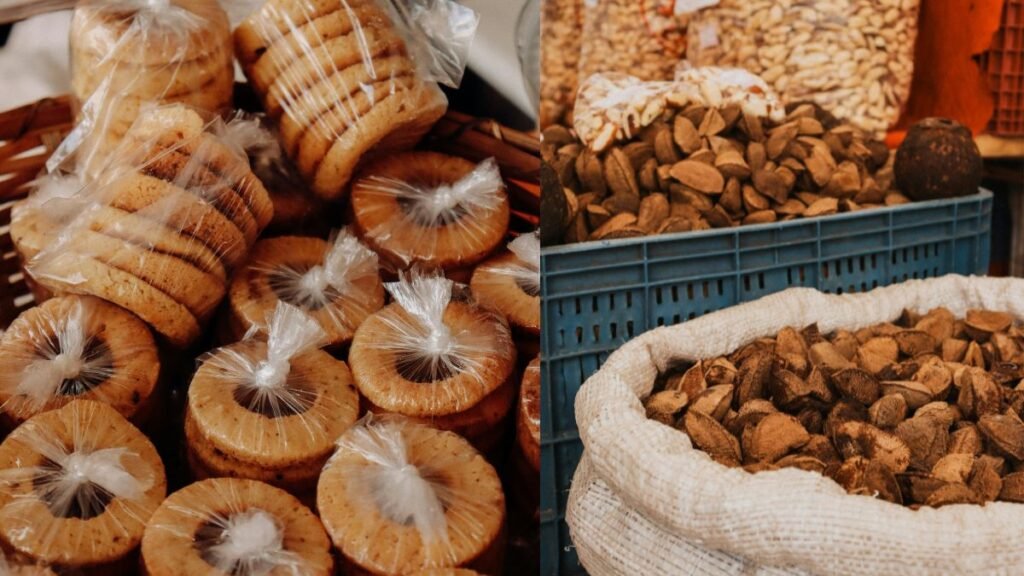
The Legacy of the Tapajós Indigenous Tribe
Long before the arrival of Europeans, the Tapajós tribe thrived here, leaving behind intricate ceramics now displayed at the Museu de Arte Sacra. Their 1542 settlement records reveal advanced pottery techniques, with geometric patterns symbolizing forest spirits.
These designs not only reflect their artistic skill but also serve as a visual language, conveying stories and beliefs that have been passed down through generations.
The craftsmanship of the Tapajós is evident in the delicate textures and vibrant colors of their pottery, which was often used in rituals and daily life, emphasizing their connection to the earth and its resources.
Today, their descendants advocate for Tapajós statehood, proposing the city as its capital. At the João Fona Cultural Center, free exhibits feature artifacts such as remnants of the 1697 fortress and the 1661 chapel bell of Jesuit missionary João Filipe Bettendorff.
These exhibits not only highlight the historical significance of the Tapajós but also foster a sense of pride and identity among the community, as they work to preserve their heritage in the face of modern challenges.
Colonial Architecture and the Cathedral of Nossa Senhora da Conceição
The centerpiece of Portuguese influence is the Cathedral of Nossa Senhora da Conceição, built in 1853. Its façade features iconic *azulejos* (blue tiles) shipped from Lisbon, which depict various religious scenes and add a distinctive charm to the structure.
Inside, carved mahogany altars blend European and Amazonian motifs, showcasing the artistic fusion that occurred during the colonial period. This melding of styles not only reflects the aesthetic preferences of the time but also symbolizes the complex cultural interactions between the colonizers and the indigenous populations.
Nearby, Richard Henington School—founded by a Mississippi educator in the early 1900s—reflects the region’s multicultural ties. The school stands as a testament to the educational efforts aimed at integrating various cultural influences, providing a unique learning environment that celebrates diversity. Even the airport displays history: two 1867 cannons from the Tapajós Fortress guard its entrance, serving as a reminder of the region’s tumultuous past and the resilience of its people.
“Every tile and artifact here tells a story of resilience—where indigenous and colonial worlds collided yet coexisted.”
Dr. Ana Porto, Historian
Conclusion: Why Santarém Should Be Your Next Adventure
Escape the tourist crowds and dive into an Amazonian adventure unlike any other. This city offers vast wilderness with a population density of just 15 people per square kilometer—far from Brazil’s packed coasts.
Direct LATAM flights from Miami to Maestro Wilson Fonseca airport make this destination accessible. Explore 22,887km² of rainforest, where 86% humidity nurtures unparalleled biodiversity.
The city sits at the heart of the proposed Tapajós region, where the rivers Amazon and Tapajós converge. Crystal-clear water and golden beaches rival tropical paradises.
As debates on sustainable development continue, visitors can champion eco-friendly tourism. Ready for an adventure where nature and culture thrive? This is your gateway. Learn more about Tucuruí.
FAQ
What makes the Meeting of the Waters unique?
The Meeting of the Waters is a stunning natural phenomenon where the dark Rio Negro and sandy-colored Tapajós River flow side by side without mixing for miles. A boat tour offers the best view.
When is the best time to visit Alter do Chão’s beaches?
The dry season (July to December) is ideal, as water levels drop, revealing white-sand beaches along the Tapajós. Rainfall is minimal, making it perfect for swimming and sunbathing.
Are there guided hikes in the Amazon Rainforest near the city?
Yes, local guides offer immersive hikes through the rainforest, showcasing its rich biodiversity, medicinal plants, and wildlife. Tours often depart from the city center or nearby eco-lodges.
Can I fish for piranhas in the Tapajós River?
Absolutely! Fishing excursions are popular, with piranhas commonly found in the river’s tributaries. Local operators provide gear and guidance for a thrilling experience.
What is the Sairé Festival, and when does it happen?
Held every September, the Sairé Festival blends indigenous and Portuguese traditions with music, dance, and folklore. It’s one of the region’s most vibrant cultural events.
How do I get to Santarém from major Brazilian cities?
The city has an airport with flights from Belém, Manaus, and Brasília. Alternatively, riverboats offer scenic but longer journeys along the Amazon and Tapajós rivers.
What’s special about the Tapajós Indigenous Tribe’s legacy?
Their influence is seen in local crafts, pottery, and traditions. Visitors can learn about their history at cultural centers or through guided tours in the region.

